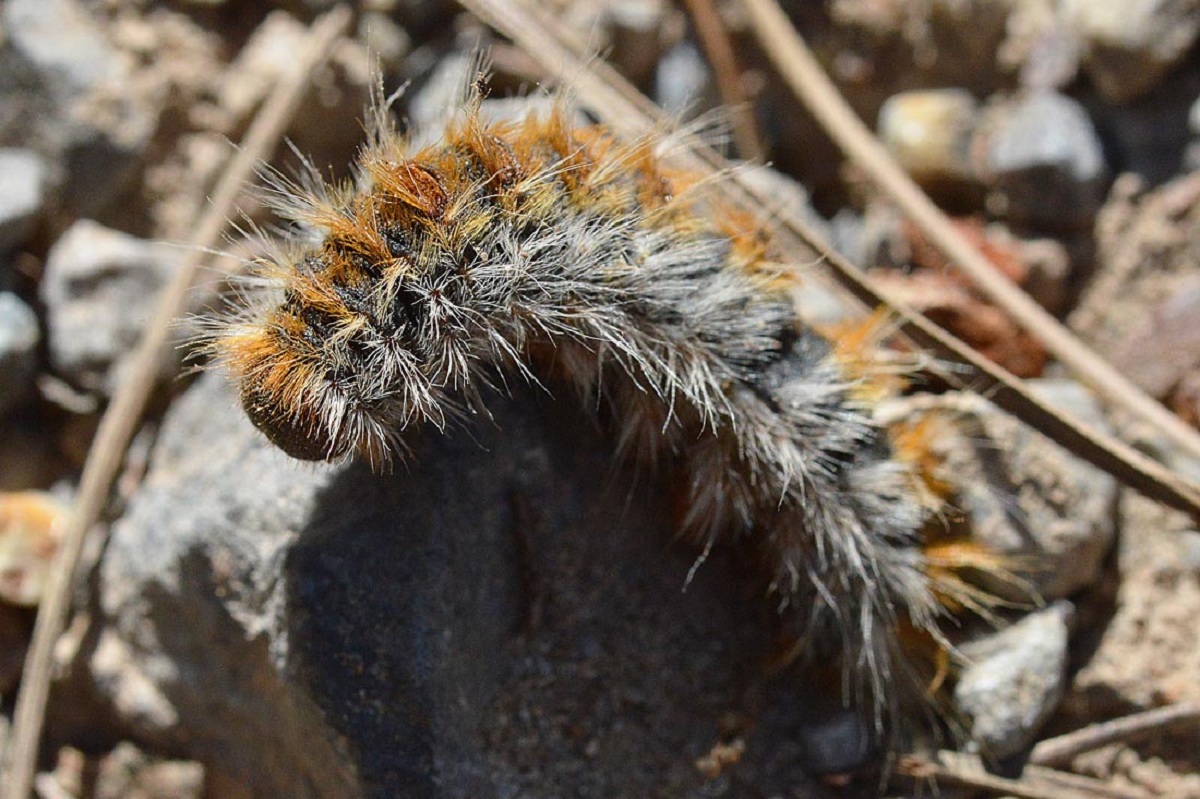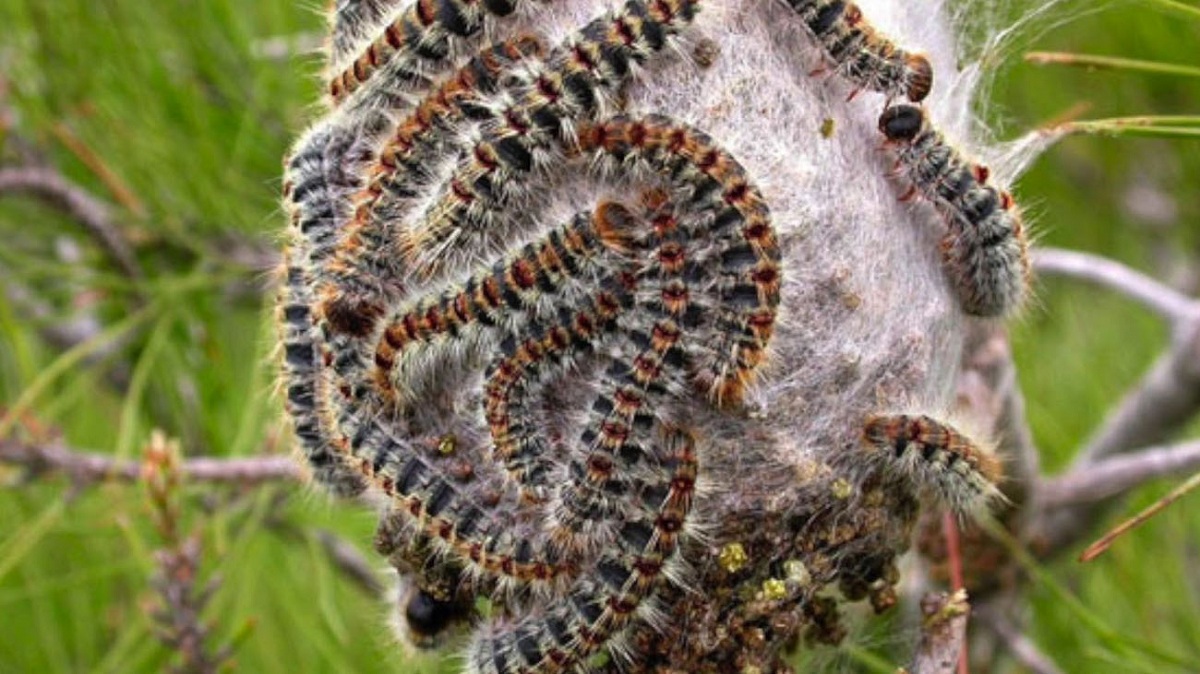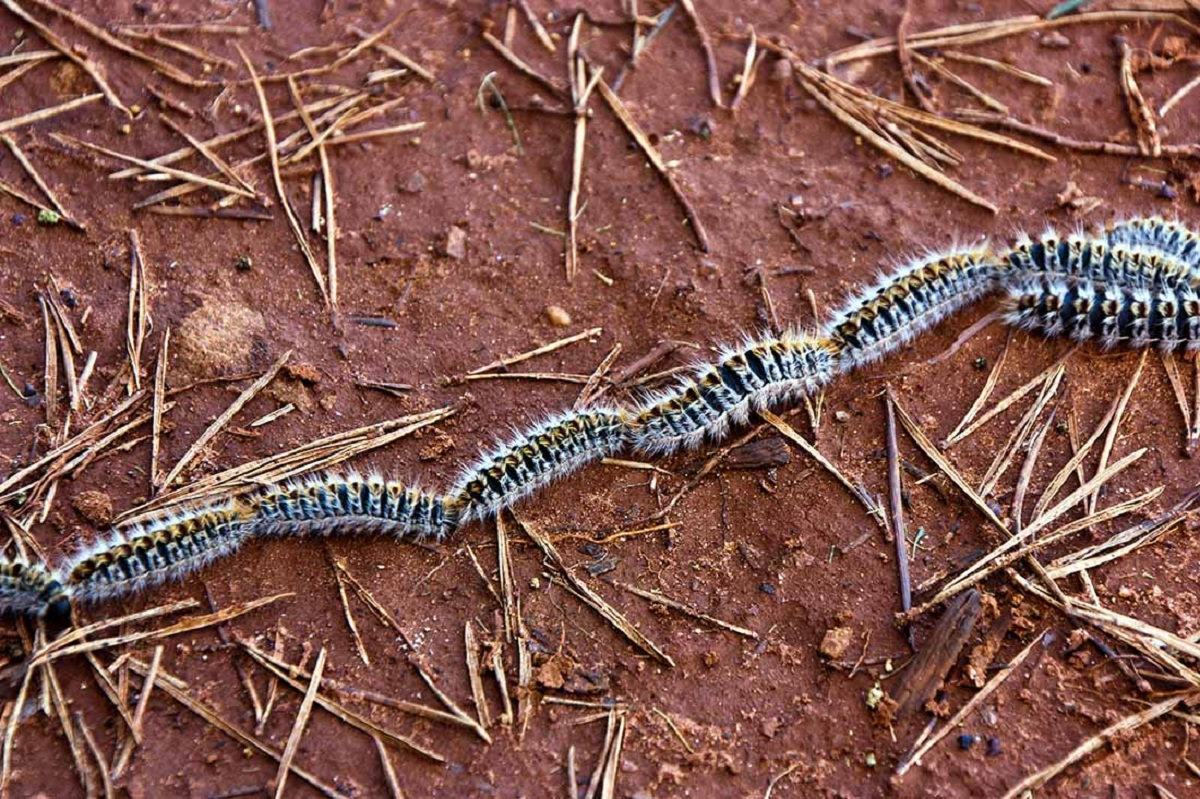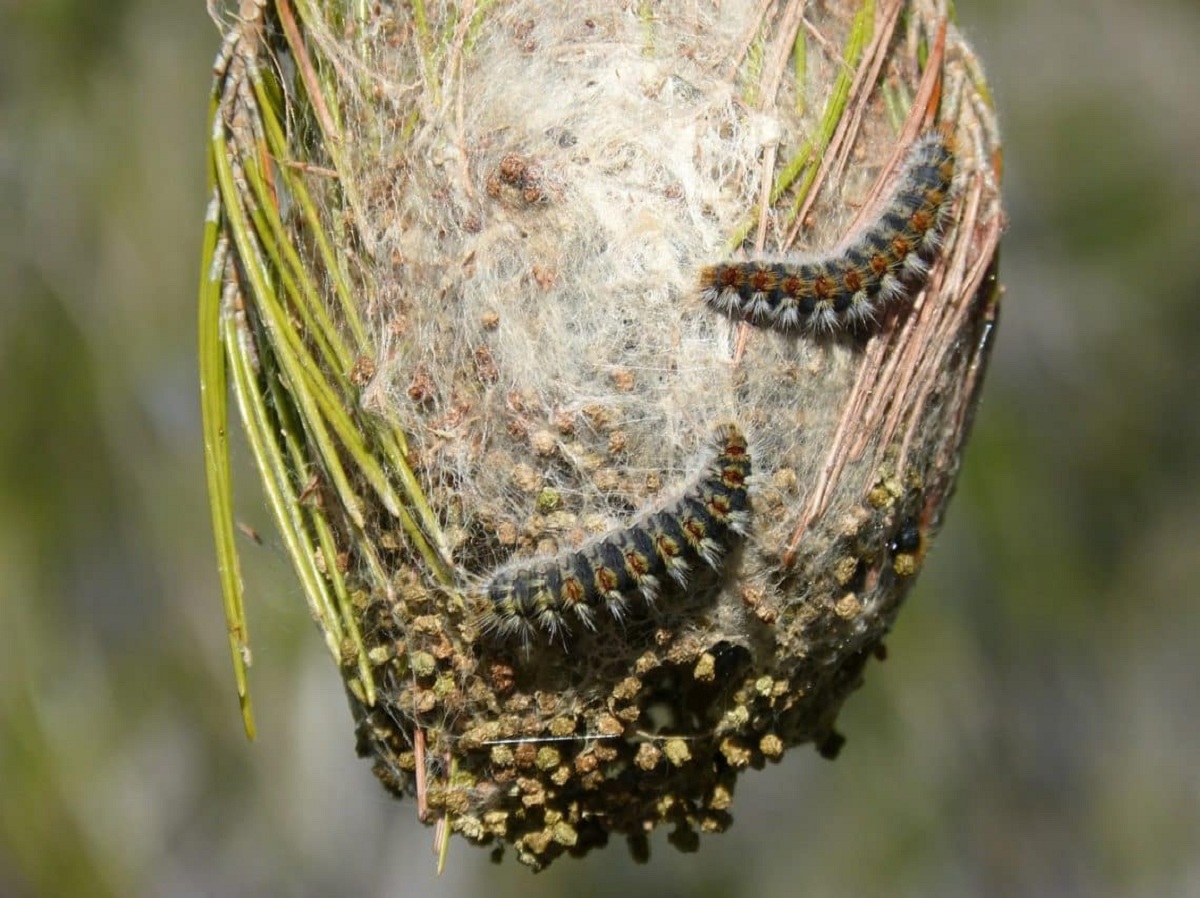
La processionary caterpillar It is a lepidopteran insect, that is, it has several metamorphic stages, including its caterpillar stage, until it becomes a butterfly when it reaches adulthood. They live in the pine forests of the Mediterranean region of Europe and, despite their name, they can also be found in cedars and firs. In some areas, it is considered a pest that can cause significant damage to pine plantations. It is one of the most feared in the breeding season.
Therefore, in this article we are going to tell you everything you need to know about the processionary caterpillar, its characteristics and biology.
Key features

The scientific name of this insect is Thaumetopoea pityocampa, and goes through different stages: eggs, larvae or caterpillars, pupae and butterflies. This development in Lepidoptera is called holometabolic.
In summer, or more precisely in July in the northern hemisphere, the processionary caterpillar acquires its adult form because the butterfly is the moment to mate. At this stage, the insect is brown in color and can blend in with the environment in which it lives. Their habit is to be active at night, so they can avoid the attacks of day and night birds.
Once mating occurs, the pine march will lay eggs and will lay eggs in a very special way, spiral-shaped needles, named after the pine needles. 30 to 40 days after spawning, the caterpillar enters its larval or caterpillar stage, which can last up to 8 months.
When their caterpillar stage is about to end, the processionary caterpillar begins to descend from the trees, and they proceed in a very special way because they are lined up in a row, one after the other. This is why this insect has a striking name, and when it comes down from the tree, it seems to be following a parade.
Under the command of the caterpillars that later They will turn into female butterflies, the long parade of pines reaches the ground, where they are buried and enter their chrysalis or pupal stage. This stage will last about 2 months and then will produce an adult butterfly that can only live for a day or two.
The dreaded phase of the processionary caterpillar

In its caterpillar stage, the processionary caterpillar goes through 5 stages, in which it becomes a very scary insect. Its main characteristic is that its entire body is covered by highly toxic hairs, This is due to the presence of a toxin called tamatopine. Caterpillar hair can cause severe allergic reactions in animals and humans, because when the parade of pines feels threatened, it releases hair that swells into the air.
In the third larval stage, the caterpillar builds a pocket where it can withstand the cold of winter, however, the activity of the larvae does not stop because it will continue to look for food at night. In its fifth larval stage, the caterpillars become very greedy and begin to eat the pine needles. In many cases, the caterpillars do not eat the needles completely, but stop biting them in the middle of the needles, causing the brown leaves to die slowly and the pine to look unsightly.
The larvae are found in the first four months of the year. Between January and April is when they begin to appear, depending on the temperature caused by weather conditions, they can be seen sooner or later. In the first months, the coldest were the "white bags" on top of the pines that could be seen from a distance. Each of them can have 100 to 200 larvae. Heat also affects each nest, and the higher the temperature, the more individuals will be born.
When the sun disappears the caterpillars go out one by one in search of food, but then they returned to their nests called "white bags." The changes started between April and May. As the temperature rises, the trees begin to fall. Once they are on the ground, they begin to burrow into the ground to continue the transformation into the butterfly.
How to combat the processionary caterpillar
Although many experts agree that the damage caused by these insects cannot be classified as serious, they pose a problem in pine plantations that are used for wood production. For this reason, Many methods have been developed to reduce the impact of processionary caterpillar attacks.
The most effective, although basic at the same time, consists in eliminating the pockets that are in the pine needles. This method is not suitable for those pockets located in the terminal needles, since this damages the growth of the trees. It is always recommended to water the branches where the pockets are in advance to avoid the toxic effects of caterpillar hairs.
Another method is to place a hard plastic, such as a funnel, at the bottom of the tree and fill it with water. This should be done before the caterpillar parade. When this happens, the caterpillar will inevitably fall into the water and die.
Finally, in some plantations more sophisticated biological methods have been developed to combat the parade of pines, including the placement of pheromone "traps" to attract males, thus reducing the impact of the reproduction of this insect.
How to treat the sting
Butterflies are not dangerous, but caterpillars are. The problem is that the caterpillar's hair produces a hives-like reaction when it comes into contact with the skin. This is usually visible because red spots appear in the area and are often irritated. In more complex situations, they can cause breathing problems.
If this happens, we must do the following
- Wash the area with soap and water to remove insect hair.
- Treat mild cases with corticosteroid cream
- Antihistamines are generally taken every hour.
- In more severe cases, the clinical center will inject corticosteroids intramuscularly.
Pets are often affected by these types of animals. After trying to use it in most cases, the area is usually irritated. There is also inflammation and there is usually excessive swelling. When the situation worsens, it can eventually turn necrotic. Therefore, it must be treated with specialized cures, applying corticosteroids and using antibiotics.
I hope that with this information you can learn more about the processionary caterpillar.
